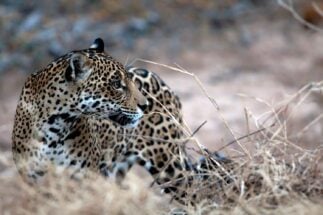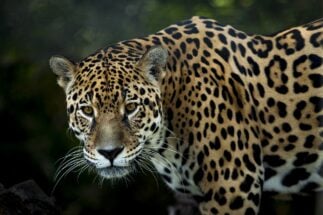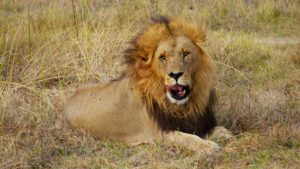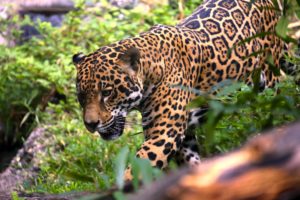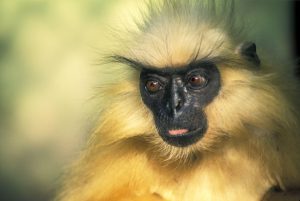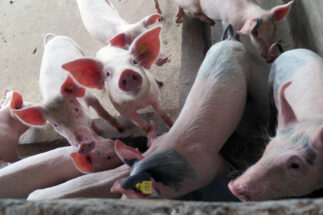In 2016, in the midst of the first investigations into jaguar trafficking in Bolivia, biologist Ángela Núñez received a short audio clip via Whatsapp: “Teeth, tiger”. That was all she could hear and it was enough.
The file was sent by an informant close to the Manuripi-Heath Amazon National Wildlife Reserve in Pando who claimed the voice was that of a Chinese worker working on a bridge in the area. Although Núñez alerted her colleagues in the National Service of Protected Areas (Sernap) at the time, she confesses that due to lack of budget they were unable to reach the site.
This is one of the stories that Núñez and other scientists studying jaguars in Bolivia have collected from the field over the past seven years. In addition to these, there are advertisements on local radio stations and even flyers pasted on the streets promoting jaguar hunting in order to sell their parts.
Authorities have managed to investigate and prosecute 21 of these traffickers, according to figures from the General Direction of Biodiversity (DGBAP) based at the environment ministry. Of these, five have been sentenced.
Yet these developments began to slow down more than a year ago and since January 2019 there have been no new seizures of jaguar parts. Nevertheless, Bolivia has begun to act and, along with scientists with public entities is currently participating in one of the strongest campaigns in Latin America to prevent the loss of an estimated 6,000 to 7,000 jaguars in the country.
The figure is optimistic when taking into account the 2019 fires in important jaguar habitats and the current lack of seizures, according to Marco Ribera, a scientific advisor to the Operation Jaguar initiative and a partner of NGO Savia.
So what is happening to the jaguar in Bolivia?
The cracks that facilitate trafficking
The first loud reports of the trafficking of fangs and other jaguar were made by scientists working in natural protected areas. Rob Wallace, who along with Guido Ayala and María Viscarra is leading a Wildlife Conservation Society (WCS) study of the jaguar’s population in Madidi National Park, says that in 2014, as they were installing camera traps, they heard a message on the radio that they hadn’t heard since 2000, when work began in the area. As if placing an advert for a kitchen, the message offered to buy jaguar teeth.
Operation Jaguar, a project developed by the Netherlands-based International Union for Conservation of Nature (IUCN) alongside Savia in Bolivia, indicates that between 2014 and 2016 some 760 fangs were seized in Bolivia. The alarm was raised researchers calculated that 200 jaguars could have been killed. The Bolivian postal service alone, Ecobol, discovered some 300 of these in 16 packages headed for Asia.
One year later, Nuñez and fellow biologist Enzo Aliaga started to gather all known cases reported to different public entities. They found seizures of jaguar parts made during home inspections or in arrests associated with other crimes. They also collected cases associated with radio ads, the most common method used to solicit jaguar fangs, many of which resulted in the arrest of those involved. “In many cases the economic incentive can be tempting for the locals (…) The traffickers take advantage of these needs,” the specialists say.
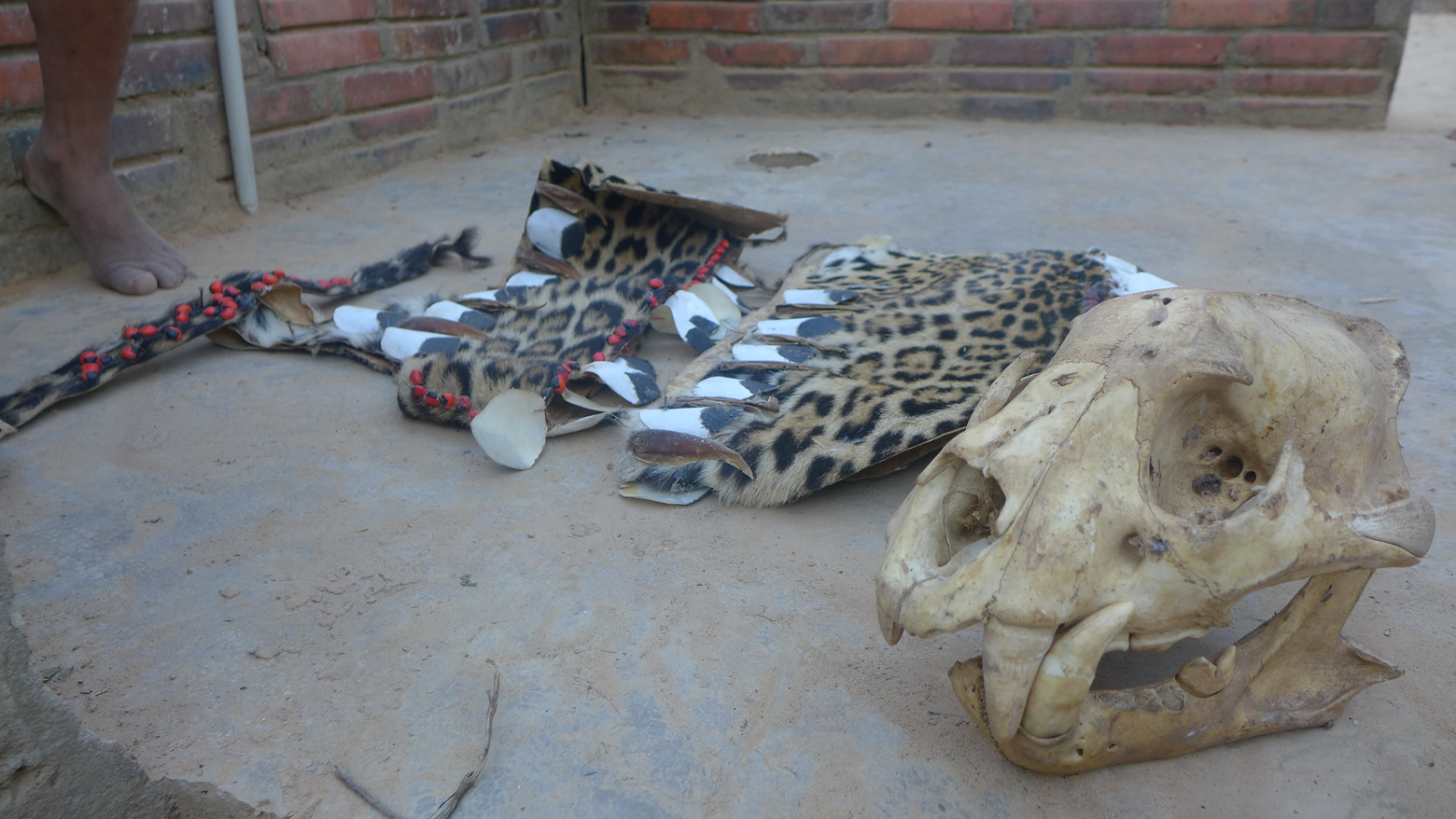
Seizures continued until 2018. Yet, from January 2019 to date, the Forestry and Environmental Conservation Police (Pofoma) have not reported any new findings of jaguar parts. “We do not know whether to be sorry or happy that we have not received any more reports on jaguar trafficking in Bolivia, much less [any] complaints,” says Rodrigo Herrera, legal advisor to DGBAP.
They are not in a position to say whether or not there has been a decrease in trafficking of the feline, as new modes of trafficking could exist within the illegal trade. What they can confirm, however, is that trafficking of other wildlife species has increased, including other cats such as cougars and ocelots. “We know that the Asian market is not only served by the jaguar,” says Herrera.
It is clear to the scientific community that this lack of seizures is alarming news. “We biologists are concerned about this situation. We’ve discussed it in the workshops that have been held this year. We wonder whether the prosecution of 21 trafficking cases has had any effect or whether they are working in less obvious ways, as the mafias do,” says Marco Ribera of Operation Jaguar.
Faced with a scenario of uncertainty, several hypotheses appear. Rob Wallace of WCS comments that the absence of seizures may be associated with a more clandestine way of operating for the mafias. However, it could also be that actions taken so far have been successful. There is a third hypothesis that several jaguar specialists share and that is linked to the conflict between jaguars and cattle ranchers.
“There have always been conflicts between jaguars and people. Where there are cattle there is a possibility of conflict. So, for all these years, the jaguar has been hunted for non-commercial purposes, just to control a problem,” says Wallace. Yet it had was never previously considered that these people stored jaguar parts including heads, skins and fangs. “When the trafficking market appears it is likely that there has been some stock,” he says.
Mafias could be storing parts with these people, something Bolivian authorities had not considered in their investigations.
Melissa Arias, a researcher at Oxford University’s Department of Zoology, argues that the conflict between jaguars and people needs to be looked at more closely. “It is possible that the trade in jaguar fangs is a by-product of this conflict with humans,” she adds.
Nuno Negrões, a scientist who until last year led monitoring efforts at the Bolivian Association for Research and Conservation of Andean-Amazon Ecosystems (Aceaa), published a study last December with other scientists in which they analysed how the perception of the jaguar, which they describe as dangerous, can lead to conflict and the animal’s death.
The idea is not to stigmatise a community or a country, but to work on both sides of the problem to solve it
Negrões says that in the northwest of Bolivia they have found that jaguar deaths are frequent but not primarily linked to trafficking. “We have not found evidence that people go out to kill jaguars to sell their parts, but those parts can end up being sold to traffickers,” he adds. He also believes that the absence of such data has to do with the lack of a rapid response capacity to the different methods of trafficking.
The emergence of new modes of trafficking has a certain logic according to Pauline Verheij, a researcher and environmental lawyer who specialises in wildlife crime. She suggests that the alertness of the authorities and wider society may have created a bubble effect: “They are no longer going to announce on the radio because they are being watched. What has happened in other countries with wildlife trafficking problems is that the routes and methodologies change.”
For the moment, Operation Jaguar specialists, together with park rangers and environmental authorities in Bolivia, have identified collection and purchase points for cat parts, as well as other potential cities from which the international shipments would leave. The analysis indicates that the animal parts are collected in both the northeast and southeast of Bolivia, in areas where the jaguar is known to live, and then trafficked across the border to Peru. Each point is detailed on the map below.
“Trafficking of jaguar parts and other wild animals is a crime and, like drug or human trafficking, uses very remote routes and sites, with little surveillance and a small population. They may even be interrelated crimes,” says Marco Ribera.
Enzo Aliaga, who since January has been the director general of DGBAP, is critical of the role the state has played: “We have talked to Pofoma – the police agency – to find out why there are no more seizures, but there is no response. The results obtained in the previous years were casual, there was no specific search for jaguar trafficking.”
DGBAP legal advisor Rodrigo Herrera agrees with Aliaga and adds that to date there is no law protecting wild animals. “There are no sanctions for trafficking. The 21 judicial processes we have achieved is because we have built with various rules and laws an accusation of the destruction of public heritage.”
The lack of laws means that penalties are less severe and that the people who benefit most are the mafias, Enzo Aliaga says. “Of the five sentences handed down, only three have received prison sentences, ranging from three to six years, with the possibility of negotiating parole,” he says.
The next step, according to Aliaga, is to go after the traffickers. However, before doing so, one must understand how they operate and have more severe penalties.
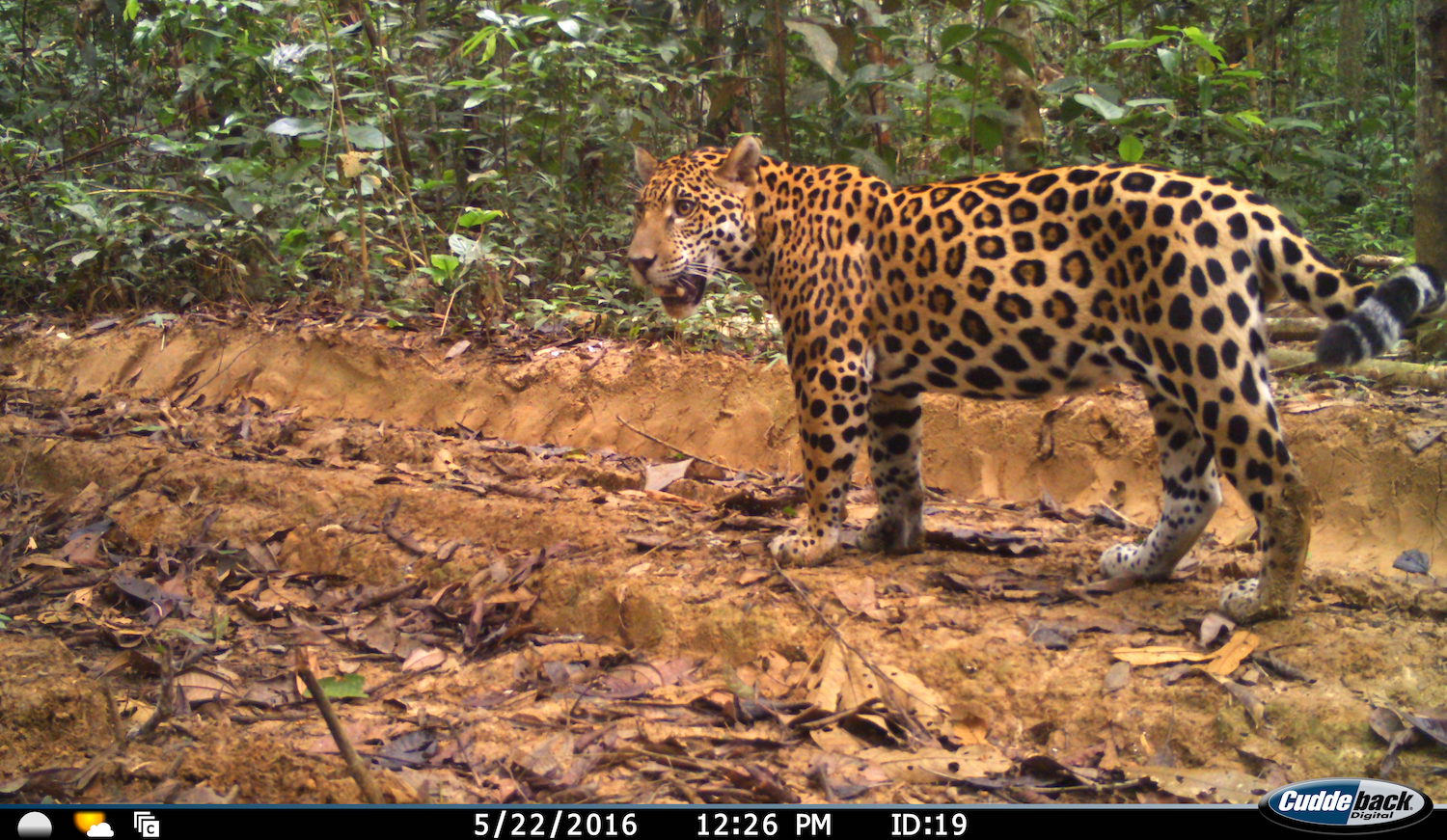
Closing in on the traffickers
One fact cannot be overlooked. Of the 21 prosecuted for jaguar trafficking, 17 are Chinese citizens. In fact, Verheij points out in her report from early 2019 with the IUCN that since 2013, the purchase of fangs by Chinese citizens has been “to smuggle them to China, sometimes with the help of Bolivians”. Verheij specifies in the report that “the ads were not only on the radio, but also on posters and flyers distributed in rural areas.
The environmental lawyer also confirms that of the 16 packages containing 300 fangs detected by the Bolivian postal service 14 were sent by Chinese citizens working in Bolivia.
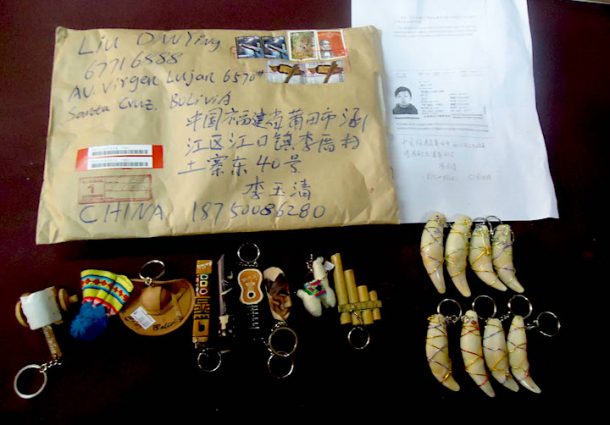
“That country is the final destination. When cat products have been found in other parts of Asia it was because they were in transit to China,” says Vincent Nijman, an anthropologist at Oxford Brookes University.
Nijman and fellow researcher Thaís Morcatty recently published a study on the relationship between Chinese investment in infrastructure projects and trafficking of the feline, a pattern already seen in Africa, where lion populations are falling.
The Bolivian government prefers to be cautious and refer in general terms to Asia when talking about the destination and market interested in these parts of the jaguar. “We do not want to encourage xenophobia,” says lawyer Rodrigo Herrera. He adds that efforts to work together with the Chinese embassy began in 2018, when it issued a reminder of the ban on buying and moving jaguar parts. Since then, however, the embassy has not communicated with the relevant Bolivian body.
“China’s position has been neutral. They told us that the biggest intervention they could make was to recommend their citizens not to consume these products,” Herrera said. He also says that visits to Chinese companies operating in territories where jaguars live have become more frequent, especially in Beni department. “It has been difficult because most of the operators do not speak Spanish or are not interested in hearing about it.”
One of the Bolivian authorities’ greatest concerns is that jaguar trafficking opens a channel that facilitates the illegal trade of other species to Asia. “We have detected interest in the market for the Andean bear, for example, which we must begin to protect more strongly,” Herrera said.
For Thaís Morcatty, a PhD candidate in anthropology at Oxford Brookes University and an expert in wildlife trafficking, countries with weak governance and high levels of investment from China, as well as poorly protected forests, are those with the highest levels of illegal wildlife trade, specifically jaguars.
Núñez has warned about this since 2016: “We found that construction work was being carried out with Chinese capital in Pando and on the border between La Paz and Beni, where Chinese citizens were found asking for fangs and where parts were seized.”
Morcatty has been gathering information from Central and South America since 2012 and was able to identify that the commercial relationship established with China also allowed a legal chain of monetary exchange to be established that can cover illegal money transfers. However, when analysing seizures of jaguar parts, she found that only 34% were destined for China. “The other 66% had no clear destination or were to be used for illegal trade within Bolivia,” she said.
Nijman, who also undertook the research, says that 66% requires further research to reveal who else is part of the trafficking chain. “The idea is not to stigmatise a community or a country, but to work on both sides of the problem to solve it. We don’t want to infer that all the Chinese workers who come to infrastructure works in Latin America are criminals, probably the vast majority are not linked to crime,” he says.
“In our investigations we are looking for criminals, not people of a certain nationality,” says Andrea Crosta, executive director of Earth League International (ELI), which investigates wildlife trafficking worldwide.
Jaguar shelters and plans to save them

The threats to jaguars in Bolivia – and in the rest of Latin America – are not solved only by controlling wildlife trafficking. There are other problems to be solved. “We still have to deal with the loss of habitat and the decrease in prey consumed by the jaguar, which forces it to continue to travel over larger areas and is more likely to conflict with people,” says DGBAP director Aliaga.
In June last year, Mongabay Latam reported the disappearance of the jaguar from Santa Cruz La Vieja’s Natural Heritage Conservation Unit (UPCN), precisely because of the growth of the agricultural frontier and subsequent deforestation of the area.
A study published in 2018 by Leonardo Maffei and other researchers on the situation of the jaguar in Bolivia found that the advance of the agricultural and livestock frontiers is the main reason why the jaguar’s habitat went from covering 75% of the national territory to just over 50%.
“The medium-term perspective is that this area will be reduced more drastically by state policies related to food security that promote productive expansion,” the research warns.
Likewise, the large fires in 2019 affected a large part of the territory covered by the jaguar. Panthera, the global conservation organisation for wild cats, estimated that at least 500 adult jaguars died or were displaced by the fires in Brazil and Bolivia.
Maikol Melgar, head of the National Protected Areas Service (Sernap), cites research by the Foundation for the Conservation of the Chiquitano Forest, I highlighting the damage caused by the fires. “2.8 million hectares had been razed, which means 16.5% of the jaguar’s territory in the Chiquitano ecosystem in Santa Cruz,” the official said.
Faced with this panorama of risks, various state-run initiatives have begun to appear with the support of private entities, universities and independent scientists. The first step was the creation of the National Alliance for Jaguar Conservation, a space to make information exchange and decision-making easier. The result was the publication of an Action Plan for Jaguar Conservation.
Another proposal that is currently in draft form at the Bolivian presidency is the creation of an Animal Protection Law, the first of its kind in the country. “We need to change the criminal code to make more drastic sanctions effective for crimes such as the trafficking of jaguar parts,” says Aliaga. These changes proposed by the draft law consider animal biocide, which has a maximum penalty of 15 years in prison.
An essential part of this fight includes the protection of natural protected areas. Most of the research that has managed to monitor jaguars over a long period of time is found in these areas, which in Bolivia number 22. An example of this work is that carried out by WCS in Madidi National Park, where they have been able to monitor the jaguar population for 20 years, in areas where loggers had cleared much of the forest.
Wallace, one of the WCS researchers on this project, comments that in each intervention they have more or less 100 stations with camera traps. In one of these areas, located between the valleys of the Tuichi and Hondo rivers, they found surprising results. In 2001 they obtained a density of half a jaguar per 100 square kilometres, in 2008 they increased to two and in 2014 to between 5 and 6 jaguars. A few weeks ago they were able to finish processing the data collected by the camera traps at that point and observed up to 9 jaguars per 100 km2, which is more than twice the South American average (4 per 100 km2).
Although Wallace points out that the recent results are from a single point in Madidi, it is nonetheless encouraging evidence of the importance of protected areas in wildlife conservation. “It’s clear that the first thing we need to strengthen is protection in these areas,” he adds.
The situation in Bolivia is encouraging, since according to Sernap director Melgar, the jaguar is found within 12 protected areas in Bolivia that total over 20 million hectares and could accommodate at least 70% of the species, according to Operation Jaguar.
However, dangers remain and Bolivian scientists’ next mission is to get the IUCN to approve Motion 106 at its next congress. The motion calls for raising the global protection status of the jaguar from Near Threatened to Vulnerable.
This article originally appeared in Spanish on Mongabay Latam as is reproduced here as part of a partnership with Diálogo Chino
